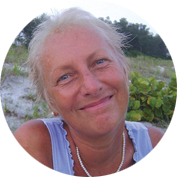Kinesiology Training – Learn Precision Muscle Testing
What is Kinesiology?
Kinesiology is the study of movement. The first distinction to make is that there is Kinesiology and there is Specialized Kinesiology. They are different. Here are the two definitions:
Kinesiology is the study of the physical movement of the human body. It involves the study of anatomy and physiology and provides in-depth understanding of the physiological processes of human biomechanics, in other words, it is the science of how our bodies move. It is a concept held within the western medical model.
Specialized Kinesiology is the study of the movement of energy and information within the human bodymind complex. The term bodymind complex includes the physical body together with all subtle energetic systems and levels of the biofield, including mental, emotional and psycho-spiritual functions, in other words, the whole person, not just the physical. There are many different specialized kinesiology disciplines with widely varied areas of focus. Here are a few examples: Touch for Health Kinesiology, Contact Reflex Analysis, Brain Balance Kinesiology, CLEAR Technique, Three in One Concepts, AKA One Brain Kinesiology, Integrative Kinesiology, Applied Kinesiology, Neural Organization Technique, and more.
Practitioners of both of the above designations are called Kinesiologists. Life Spectrum Institute provides training in Specialized Kinesiology.

How does it work?
The body’s language is electrical in nature. Every action taking place in our bodies is mediated by some form of electromagnetic transaction or process. The most fundamental concept of polarity presents itself as electricity and magnetism, the two opposing and complementary forces necessary for life to exist. In other words, we have a binary system here, and a binary system provides the means for communication. For example, Morse code is a binary system of dots and dashes, two units that can be used to communicate whatever one chooses. In computer science, the binary system of ones and zeros, which correspond to on and off states, is read and understood by your computer countless times per second. The human nervous system has a binary system of on and off states that can be used by a skilled Kinesiologist in a multitude of ways. This opens the door for vast possibilities in the realm of healing, as it allows us to access information relevant to each individual’s healing journey with precise specificity. Additionally, the human being is not a computer. It is a sentient, conscious entity with innate intelligence and a totally unique history and soul purpose. All of this is relevant in that this communication tool allows for the client’s innate intelligence to reveal to the practitioner the order in which a given procedure, correction or process is applied, and indeed, which procedures may or may not be appropriate. Thus, each client’s unique needs can be honored and prioritized. So to clarify, for those who may be new to kinesiology, it is not the muscle testing itself that ‘does the healing’, as it were. Rather, a skilled practitioner with a diverse skill-set can use precision muscle testing to efficiently identify how the session is going to unfold, step by step, according to the unique priorities of each client. It is a truly priceless tool.
Life Spectrum Institute may offer different study paths for kinesiology training at different times. Currently, precision muscle testing is incorporated into the Integrative Trauma Resolution training program. Upon completion, practitioners will graduate as Specialized Kinesiologists certified in Integrative Trauma Resolution.

History of Kinelsiology
Dr George Goodheart, a chiropractor from Detroit Michigan, founded Applied Kinesiology in 1964, after working in innovative ways with his patients from post WW2 through the mid 1960s. His work continues through the International Associated of Applied Kinesiology. Interested parties can find a more detailed history online.
Dr. John Thie developed Touch for Health Kinesiology (TFHK) in the early 1970s after being greatly inspired by the work of Dr. Goodheart.
Gordon Stokes, a master TFHK practitioner, created Three in One Concepts in 1976, and then partnered with Daniel Whiteside and Candace Calloway in 1983 to create the finalized form of this expansive kinesiology modality, also known as the One Brain Method. Three in One Concepts goes well beyond the content of TFHK to explore multiple aspects of wellness including human development, emotional stress defusion, neurolinguistics, vibrational remedies, behavioral genetics, brain integration techniques and much more, thus exemplifying the potential scope of how kinesiology can be utilized in myriad ways. The founders of this technique are since deceased and it is no longer being taught.

Your instructor, Juliet Mathison, graduated from the Three in One Concepts Kinesiology training in the early 1990s and is also a graduate of the first class of Brain Balance Kinesiology from the Brain Wave Organization in 1995. She has been training professional kinesiologists since 1994. During the mid to late 1990s, she was an instructor for One Brain/Three in One Concepts. Inspired by her experience with the methods she had studied, Juliet created the Integrative Kinesiology Training Program, (I.K.) in 2004. I.K. is a two-year course of study in psycho-emotional and energetic healing for professional practitioners. This work has since been reinvented and expanded upon and is now presented as Integrative Trauma Resolution.
